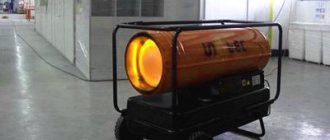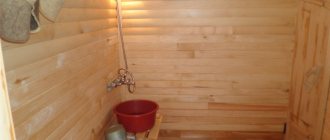Autonomous sewerage is an excellent alternative to traditional cesspools. Installing a septic tank is the most effective solution in cases where it is not possible to connect to a centralized system. The choice of containers for septic tanks is quite large. Often, owners of country houses, cottages, and summer cottages choose plastic or metal tanks. If you don’t want to spend money on building a sewer system, you can build a system with your own hands from reinforced concrete rings, bricks, or even worn-out car tires.
The simplest septic tanks are only suitable for storing wastewater. As soon as the container is full, you need to call a sewage truck and pump out the sewage. More convenient to use are autonomous sewers with soil treatment or deep biological treatment. To set up a full-fledged system, you must first draw up a project, which will include diagrams for the location of wells, connections of pipes and other equipment. Proper implementation of such a project will result in a functional sewer system that will last for many years.
Requirements for septic tanks
Autonomous sewers must meet a number of requirements regulated by legislative documents SNiP and GOST. Errors during the installation process can lead to very disastrous consequences. If sewage flows out due to overfilling or cracking of the tank, the entire area will be filled with a fetid odor, and soil and groundwater will be contaminated. To avoid such troubles, you need to carefully study the requirements for septic tanks.
- Sufficient volume. It is highly desirable that the septic tank container holds liquids 4 times larger than the daily surge. Capacious tanks allow residents of the house to freely use the sewerage system, and also provide high-quality sewage treatment.
- Reliable design. Mechanical loads to which a septic tank is exposed during operation can lead to cracks and damage to the tank. The consequences are very unpleasant.
- High degree of wastewater treatment. Only wastewater that is 90-95% purified can be disposed of in the soil. Otherwise, soil contamination may occur. Install not one, but two or three wells, arrange a filtration field or drainage well.
- High temperature resistance. Hot waste is coming out of your washing machine or dishwasher. It is important that they do not have a destructive effect on the material from which the tank is made.
- Possibility of operation in the cold season. To prevent sewage from freezing in the sewer in winter, during installation the depth of soil freezing in the region should be taken into account. It is also important to insulate the well.
- Easy maintenance. Storage-type sewers need to be cleaned as they fill. If you set up a bioseptic tank or a septic tank with soil purification, you will have to call sewer trucks to pump out sludge no more than once every six months.
If you decide to install an autonomous sewer system at your dacha or in a country mansion, do not try to save on everything. This may negatively affect the performance of the septic tank. You can save money once, but the inconvenience will persist for decades, because the sewer system is designed for long-term operation.
What is storage capacity?
The storage tanks in question are designed to collect wastewater from the indoor sewer system. Typically, this wastewater is then pumped out and transported by a sewer truck. But it is also possible to drain them into the ground after initial cleaning. These mini septic tanks are a sealed tank made of various moisture- and frost-resistant materials.
Unlike full-fledged local treatment stations, they do not have equipment for filtering and processing sewage. This is simply a small storage facility for sewer water.
Installation diagram
Domestic wastewater in such a reservoir can at most only settle before draining. Without constant calls from the sewer truck, this sewer storage septic tank will definitely overflow. As a result, fecal matter will splash onto the soil, which will inevitably lead to problems.
Types of containers for septic tanks and their features
A septic tank is the main element of an autonomous sewage system. It can be made of different materials. The main function of the system is the collection, storage and processing of sewage waste, its disposal without harm to the environment. Depending on the principle of operation, septic tanks are divided into three categories.
- Storage-type treatment facilities. The simplest design consists of one tank. This is a traditional drainage pit, which needs to be pumped out as it fills. The construction of such a sewer system does not require serious financial costs. But the system is not very convenient in permanent residences where more than 2 people live.
- Overflow septic tank. The system consists of two or three wells. In the first, the wastewater is cleaned of solid impurities, in the second - from oils and fats, in the third, final filtration occurs. Effluent can be disposed of in a filtration field, where the liquid is further purified by passing through a gravel-sand bed.
- Deep biological treatment stations. These are the most convenient and modern factory-made facilities. A septic tank is a solid tank in which the internal space is divided into several compartments. Thorough cleaning of sewage is ensured by aerobic or anaerobic bacteria.
You can install an autonomous sewer system with your own hands, but you need to take into account that the requirements remain the same as for factory-made septic tanks. The tank must be reliable, strong enough, able to withstand mechanical loads, temperature changes and other negative influences of external factors. The cost of homemade systems is low, but you will have to tinker. If reinforced concrete rings are used, for example, it may be necessary to use specialized equipment.
Septic tank made of concrete rings
Most often, concrete or reinforced concrete rings are used to build homemade septic tanks. The sewer system may consist of two or three wells. Each of them has its own purpose. The bottom of the first tank must be concreted to prevent contamination of the soil with sewage. It is connected to the second container by a pipe, which is installed at a slope of 2 cm per meter. This will ensure unhindered flow of wastewater from the sump into another well.
In the second well, wastewater is filtered. To make this process as efficient as possible, you should arrange a filter made of crushed stone, gravel or expanded clay. Final cleaning occurs in the third well, after which the liquid can be safely disposed of in the soil. Advantages of a septic tank made of concrete rings:
- Simple design. If you understand at least a little how a septic tank functions, you can easily build a sewer system with your own hands. You won’t need any special knowledge, just physical strength, the necessary materials, and a diagram of the arrangement of elements.
- Low cost. Compared to factory-produced models, building a septic tank from rings will cost much less.
- Minimum time spent on construction. The entire range of work can be completed in just one day if you have all the necessary materials and tools at hand.
In addition, concrete septic tanks have excellent strength characteristics. The design is reliable and designed for long-term use. Concrete rings are connected to each other, the joints must be carefully sealed to prevent sewage from seeping into the ground. It is important to take into account that in the winter season, drains can freeze, therefore, when preparing a pit, it is necessary to take into account the depth of soil freezing, and after installation work, insulation of the pits must be taken into account.
Plastic septic tanks from Eurocube
Eurocube is a relatively young creation that is rapidly gaining popularity due to its excellent performance properties, optimal rigidity and strength, and affordable price. The product is a plastic tank made in the shape of a cube. The metal frame provides the tank with protection from deformation and increases its resistance to the negative effects of external factors. An undeniable advantage of the design is its low weight, which greatly simplifies the installation of septic tanks. No heavy equipment is required to install the tank. All technological processes can be performed with your own hands.
To build a functional, easy-to-use autonomous sewer system, two or three Eurocubes should be used. The installation of a septic tank consists of the following stages:
- preparation of plastic tanks;
- performing all necessary measurements;
- carrying out excavation work, digging a pit;
- pouring a sand cushion on the bottom, pouring concrete-based mortar;
- assembly of septic tanks;
- installation of septic tanks in prepared pits;
- connecting tanks with pipes at an angle;
- sealing joints;
- backfilling and compaction of pits.
Important! In areas with high groundwater levels, there is a risk of the septic tank being washed away and floating up, which can lead to very unpleasant consequences. To prevent the threat, tanks should be made heavier by securing them with special straps.
Autonomous brick sewer
If you have brick left after dismantling the old building, you can use it to install a septic tank. Expect that you will have to spend a lot of time and effort on arranging a full-fledged local sewage system. But it will be very cheap. At your dacha, you can build a regular drainage pit out of brick, and on the territory of a country house, you can build a full-fledged, functional sewer system.
Advantages of a brick septic tank:
- the source material is available, you don’t have to buy a brick, you can use an old one, but a whole one;
- structures built using the brickwork method are designed for long-term operation, resistant to deformation, atmospheric moisture, and chemicals;
- the whole range of work can be done with your own hands; laying bricks is not difficult;
- brick is suitable for the construction of any type of sewerage system (cesspool, system with soil treatment, with deep biological treatment);
- You can make a septic tank of any tank, adapting it to the characteristics of the site.
To build a brick septic tank, you need to prepare a full clinker brick (if you buy it). Mortar is prepared from sand, cement, and water. For high-quality sealing of the tank, bitumen mastic is used. To strengthen the structure, steel reinforcement should be installed. You should also select a hatch for each tank.
Important! A brick septic tank can consist of two or three compartments located close to each other. To ensure efficient overflow of sewage, it is necessary to connect the compartments with a pipe installed at an angle.
Septic tank made from car tires
By rights, the most affordable material that can be used for the construction of septic tanks are car tires. Every car owner has old, worn-out tires that are only suitable for flowerbeds or recycling. Why not use them to create an autonomous sewer system? The advantages of this solution include simple installation and low price. For a country house for non-permanent residence, this is an excellent alternative to capital, large, expensive septic tanks.
Important! If you are planning to build a septic tank from tires, keep in mind that its productivity is quite low, as is the speed of processing sewage. As a rule, such structures are of a storage type, so they will have to be pumped out regularly. There is a risk of contamination of the soil and groundwater with sewage, because it is difficult to perform high-quality sealing.
To build one well, you can use 5-7 car tires. It is important that they are intact and undamaged. Installation of a waste treatment plant from old tires includes the following steps:
- marking the territory, determining the location of tanks;
- carrying out excavation work, digging a pit for a septic tank;
- protecting the tank from groundwater (concreting the bottom or laying a clay lining);
- preparing tires - removing the top part using a jigsaw;
- connecting tires with wire, sealing joints and punctures;
- cutting out inlet and outlet holes;
- connecting tanks with a pipe that is located at an angle;
- backfilling pits;
- installation of covers made of non-rotting materials.
The septic tank can be upgraded by connecting sensors and installing a compressor to supply air. But, as practice shows, this is impractical. Sewerage from car tires is not affordable, but its productivity is quite low. If a family of 2 or more people permanently lives in the house, you will need a more powerful and convenient system. But it’s perfect for a dacha.
Features of metal tanks
The functionality, performance and service life of the sewer system depend on the material used to manufacture the main element of the sewer system - the septic tank. One of the main requirements for tanks is rigidity and strength. Often owners of country houses and summer cottages prefer metal tanks. Before buying them and using them for sewerage installations, you need to familiarize yourself with the advantages and disadvantages of the containers.
- Resistance to erosion by groundwater. Metal tanks are quite heavy, they are securely held in the ground, and ensure efficient, productive operation of the sewer system.
- Optimal strength. Metal containers are characterized by high resistance to mechanical damage. The shocks to which the tank is exposed during installation are not capable of harming the tank.
- Tightness. The design of the containers is usually solid. If there are connections, they are securely welded. This provides the septic tank with excellent tightness. Drainage leaks are excluded.
As for the disadvantages, the main one is the susceptibility of the metal base to corrosion. If you use a container made of untreated metal, it will become rusty over time. Manufacturers use stainless steel to make septic tanks and treat them with special anti-corrosion compounds. It should also be taken into account that the structure is quite heavy; it is impossible to do without the use of heavy equipment during the installation of an autonomous sewer system.
Advantages of plastic tanks
Ready-made plastic tanks are probably the most in demand. They are practical and lightweight. No heavy equipment is used for their transportation and installation. You can even transport plastic tanks on the roof of a car. Setting up a sewer system from plastic tanks is not difficult. It is enough to prepare pits for wells, install containers on a pre-laid cushion, and connect the tanks with pipes. If the septic tank has soil post-treatment, you will additionally have to equip a filtration field. The advantages of plastic septic tanks are obvious.
- Ready-made containers are produced by reliable manufacturers who provide certificates and permits for their products.
- The range of models is quite wide, you can choose the best option for a particular case.
- Products are available in vertical and horizontal versions, with different capacity levels.
- The material is characterized by high resistance to moisture, aggressive components, and chemicals.
- Low weight ensures ease of installation and transportation of plastic tanks.
- The strength of products can be increased by installing stiffening ribs inside, which strengthen and toughen the structure.
Not without its shortcomings. In areas with high groundwater levels, plastic tanks may be washed away by water. Excessive load from above or soil displacement can cause mechanical damage to the septic tank, causing sewage to spill throughout the entire area. To prevent unpleasant situations, you can install a plastic tank on a reinforced concrete slab or secure the tank with straps.
Use of storage sewer
It is recommended to choose small storage septic tanks for self-installation only if they are installed on a summer cottage. If the cottage is two-story with a considerable amount of plumbing, then you will have to look for a very spacious storage tank for the sewerage system. Here it will be much more profitable to install an anaerobic or aerobic treatment plant, which has greater productivity and efficiency in processing sewage.
Installation
Rules for installing autonomous sewers
Local sewerage is a system that can potentially pose a threat to the environment and ecological situation of the region. You can’t just spontaneously build a treatment facility. It is necessary to first develop project documentation, approve it with the SES authorities, obtain permission, and only after that begin purchasing materials and starting construction work. During the installation of sewerage, you should adhere to the norms and rules regulated by SNiP and SanPiN. When choosing a septic tank location on the territory, it is very important to take into account the recommended distance from the tank to various objects:
- to the house - at least 5 m;
- to artificial or natural reservoirs - at least 30 m;
- to reservoirs with running water – from 10 m;
- between sources of drinking water and sewage tanks, the distance is at least 50 m;
- to trees – 3 m, to bushes – 1 m;
- to the road – 5 m;
- to the gas pipeline running underground – 5 m.
You must strictly adhere to the installation instructions and perform technological processes carefully and carefully. The performance characteristics and service life of sewer systems depend on the quality of the container for the septic tank, as well as on how competently the installation work is performed. Typical mistakes that are made in the process of arranging a septic tank: poor sealing of joints, incorrect installation of pipes, as a result of which there is no overflow from one compartment to another.
There are enough varieties of septic tanks today. You can buy a ready-made structure and install it on the territory of your home quickly and without much effort. And you can save money by spending time on arranging an autonomous sewer system from scrap materials. What to do? The choice is yours. The main thing is that the septic tank is built in compliance with all norms and requirements, does not harm the environment, and properly performs its functions for a long period.
Installation of a storage septic tank. Standards.
According to Soviet standards, the location of a sealed septic tank on the site to a drinking source must be at least 15 meters. In holiday villages with plots of 6-10 acres and two or three neighbors, this standard cannot be met (not only your septic tank must be removed from your well, but also your neighbors’ septic tanks). For this reason, the bacterial background in wells can deviate from the standards by hundreds or even thousands of times. The quality of drinking water must be constantly checked by submitting it to a laboratory for analysis, or a high-quality water treatment system must be installed.
Expert advice:
If you want to buy a septic tank that needs to be pumped out only once every 2 years with a high degree of reliability and cleaning efficiency of up to 98%, you can buy a modern Super septic tank Tver, which meets all of the above requirements.
Conclusion of a specialist on a septic tank: A sealed septic tank is installed when any other options are impossible. This is inexpensive equipment, expensive installation and very expensive and troublesome maintenance, the cost of which within 4-6 months will exceed the cost of an aeration station or biological treatment plant with installation.
Promotion! TERMIT storage septic tanks on a turnkey basis at the best price! Hurry up to order from July 3 to July 19!
| Name | Promotion price |
| Storage septic tanks TERMIT | |
| Storage septic tank TERMIT 1.2 (1-3 people) | 45 750 |
| Storage septic tank TERMIT 2 (2-4 people) | 64 750 |
| Storage septic tank TERMIT 2.5 (2-5 people) | 84 750 |
| Storage septic tank TERMIT 3 (3-6 people) | 102 000 |
| Septic tank TERMIT PROFI 3.5 (5-7 people) | 116 750 |
Order Septic Tank Termite at the best price!
At dachas and country houses, where people do not live permanently, but only from time to time, most often there is no need to equip a full-fledged autonomous sewer system that provides for wastewater treatment and its disposal to environmental facilities. In such cases, it is enough to purchase and install a storage septic tank, which will be quite sufficient to collect all household wastewater.
How often will the contents of the container need to be pumped out?
This depends on its volume, living conditions in the house and, accordingly, water consumption. SP 30.13330.2012 “Internal water supply and sewerage of buildings” specifies the standard for water consumption - about 200 liters per day per person. It is easy to calculate that a family of three permanently living in the house will drain about 4.2 m³ of wastewater per week into the sewer. Moreover, the volume of the tank of sewage disposal machines is, as a rule, 4-5 m³. Thus, if a family of three people permanently lives in a house and actively consumes water, it is advisable to provide a storage tank with a volume of at least 8 m³ (as an option, combine several tanks into one network). But even in this case, sewage will have to be pumped out quite often, and this will be expensive. If the container overfills, it will be impossible to use the sewer.
In addition, such a “volumetric” factory-made container costs the same or even more than an aeration unit of a smaller volume, but designed for the same number of people living in the house.
It is important to consider the location of the storage tank. It is necessary to provide the ability to extend the intake hose from the sewage disposal machine to the tank. The standard length of such a hose is 10-15 m, but with the help of couplings it can be extended to 40 m or more. However, the cost of pumping with an extended hose will be higher.











